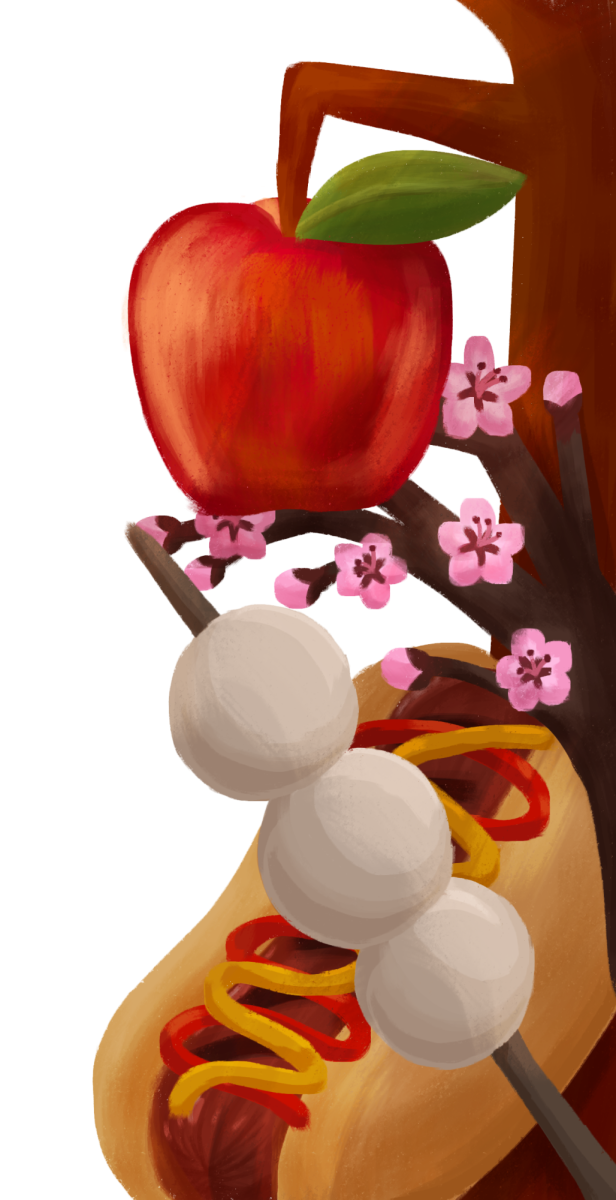Hot dogs and gyudon. American school on the weekdays, Japanese school on the weekends. Fourth of July parades and Cherry Blossom festivals. For the past seventeen years, I’ve grappled with two halves of myself – an American upbringing and a Japanese past.
I’m not unique in this experience.
The “American Dream” which lured my family and millions of others to the United States creates a belief that the United States is filled with golden opportunities. And that it is, unequivocally, a safe haven for all immigrants and ideas.
Yet the Statue of Liberty is coming under attack.
In 2022, the FBI reported 11,643 hate crimes in the United States, the highest number ever recorded. A poll by Stop AAPI Hate found that 49% of Asian Americans and Pacific Islanders were victims of a hate act in the U.S. in 2024. A Pew Research center report found that more than 54% of Latinos have experienced some form of discrimination. Executive orders are being issued to end birthright citizenship, expand use of immigration detention, and speed up deportations.
Crackdown on immigration and diversity is an issue especially sensitive to us, as our community here in Palo Alto is especially diverse. Silicon Valley and the broader Bay Area provide opportunities at the top of respective fields, especially in science and technology. As a result, approximately 36% of our community is foreign-born, with generational immigrant families also calling Palo Alto “home.”
Being a member of one of these immigrant families, I have found comfort in a cultural solace.
I’ve attended Japanese school on Saturdays since I was five. And 12 years later, I’m graduating. But a milestone that I’ve always been working towards now scares me. My Japanese school provided me with a community of students who similarly grappled with the dual identity of being Japanese and American, allowing me a space to remember the second half of myself. And as I graduate, I find myself asking “Will I ever find another space like the one I’m now leaving?”
As immigrants and members of the Palo Alto community, it is especially important that we find and protect cultural spaces where people can feel comfortable with their identity during these difficult times.
The Bay Area has a wide variety of cultural centers. The Palo Alto Jewish Community Center hosts community events showcasing religious films or Jewish celebrations. The Palo Alto Buddhist Temple offers group activities such as taiko and kendo, also teaching Japanese culture. And the San Francisco Arts Commission advertises art centers celebrating African American, American Indian, Asian and Pacific Islander art pieces. These various organizations exist across the Bay Area to promote and protect the identities of different global cultures.
It’s also important that we celebrate different cultures in our community. This can be done by hosting multicultural days, holding events celebrating a specific culture that are open to all members of the community. In this way, our cultural spaces can transform to become a place of comfort for those who identify with a culture, but also a way to connect cultures together.
In an interview with The Paly Voice last month, Shounak Dharap, vice president of the Palo Alto Unified School District board said that cultural events are necessary to help people come together in times of division.
“A lot of times when we’re in the middle of issues that people have different ideas about, it can feel like we’re more divided than we actually are,” Dharap said. “It’s really important for us to be able to bring people together in these kinds of events, so we can all realize that fundamentally, in Palo Alto, we all share the same core values.”
One way to support these communities is by joining them. With these resources and community spaces available, it’s important for immigrants to join these groups, to use that opportunity to connect with others and feel supported – both in cultural identity, and identifying as an immigrant.
Finding these spaces doesn’t mean that you have to connect with someone from your own culture. It can be as fundamental as connecting with someone who has also gone through the immigrant experience. There are universal immigrant emotions. Maybe your heart aches for a taste of your homeland’s cuisine. Maybe you long to hear the voice of your grandparents or cousins. These shared experiences can resonate across cultural identities to expand a community of connection.
In a world where we see our country and communities fracture into different groups and identities. In these times of hate and division, it is critical that we preserve our own cultural hearths. Now, it is of the utmost importance to value, to protect and to uphold the values of the multicultural community we are.
Tonight, come over for dinner. We’ll have hamburgers – and mochi for dessert.
